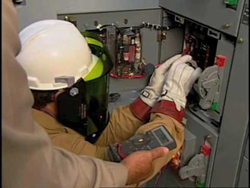
Industrial Electrical Safety.
On average, every 30 minutes a worker is so severely injured on the job that they require time off to recover. and approximately three million electrical professionals are engaged in work where lockout/tagout procedures should be used each day. It is these sheer numbers that contribute to electrical-related violations being in the top 10 of OSHA violations. The two that continue to make the top 10 are electrical wiring methods and general electrical requirements.
Visit Our AF Course Page:
www.electricityforum.com/electrical-training/arc-flash-training
The National Institute for Occupational Safety and Health (NIOSH) identify four main types of electricity-related injuries:
To avoid injury or to mitigate injury it si important to ensure employees are properly trained and qualified for the job. A few safety tips to remember to help avoid injuries include:
There are more than 300 electrocutions and some 4,000 injuries in the workplace each year directly related to electrical hazards. Although not the leading cause of workplace injuries, electrical hazards cause serious injury and death, and are costly to the employer. Often overlooked, grounding is a major component of electrical safety, as outlined in the OSHA manual in part 1910.305, subpart S, Wiring Design.
Good grounding creates a low-resistance path so electrical charges will flow safely away from the work area, so they won’t cause harm. Normally grounding is built in as a permanent part of the electrical system but should never be taken for granted.
Proper tagout procedures (of electrical boxes and equipment) are a major component of any safety program. “Tagging out” is in reference to locking circuit breakers or start-up panels, and attaching warning tags so that no other worker throws the switch by mistake.
In Canada, the Canadian Standards Association established in 2006 CAN/CSA-Z1000-06, Occupational Health and Safety Management Systems (OHSMS) as the national standard. Included in section 4.4.2 and 4.4.3 are the preventive and protective measures, and the application of such. These include: